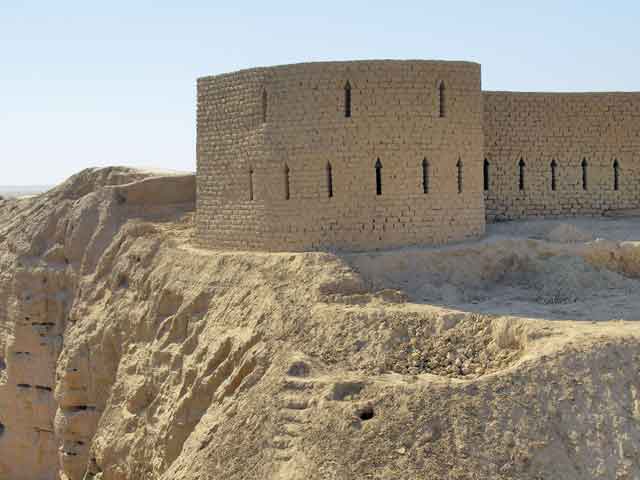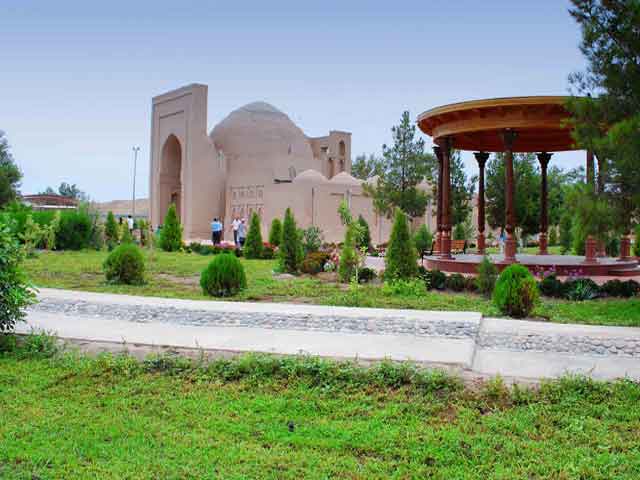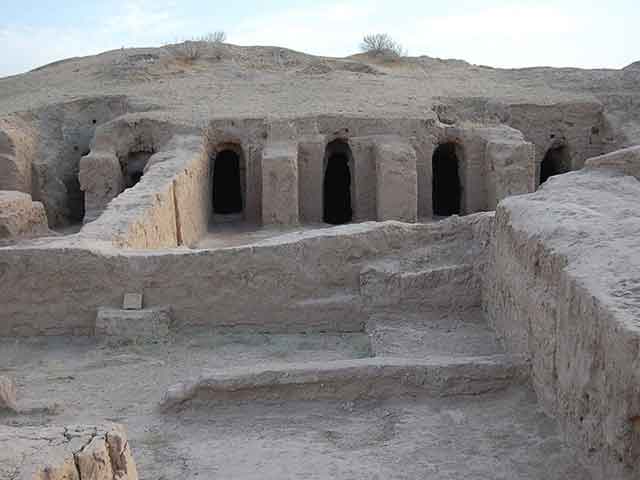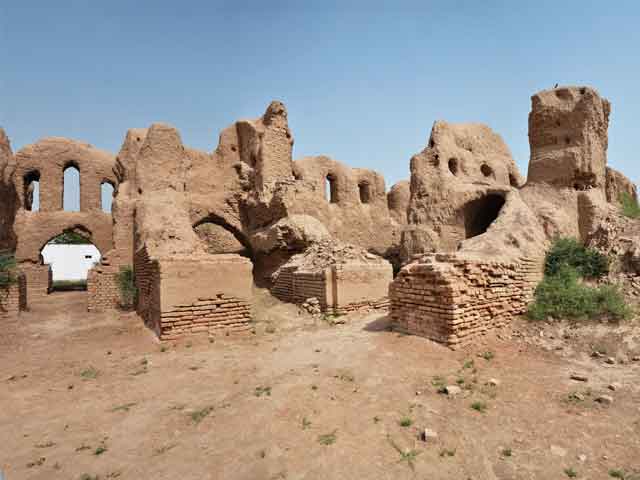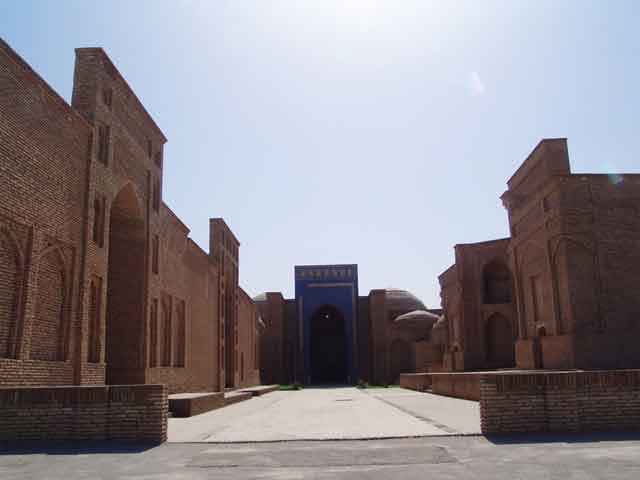Kampyrtepa is a citadel surrounded by a moat, and the "lower city", surrounded from the side by a fortified wall with towers. The citadel, which has multi-meter layers of Hellenistic time, began to settle in the late 4th century. BC. The building of the "lower city" was made according to a single plan at the beginning of the first century. AD And lasted until the reign of Kanishka I (first third of the 2nd century AD).
Al-Ḥakim al-Tirmidhi, full name Abu Abd Allah Muḥammad ibn Ali al-Ḥakim al-Tirmidhi al-Ḥanafi (d. ca. 869), not to be confused with the famous hadith master Abu Isa al-Tirmidhi, was a Sunni jurist (faqih) and traditionist (muhaddith) of Khorasan, but is mostly remembered as one of the great early authors of Sufism.
Buddhist cult center Karatepa (in translation from the Uzbek "Black Hill") occupies an area of about 7 hectares and is located on a three-part elevation of sandstone, where at one time there were dozens of monastery and temple complexes.
The settlement of Dalverzintepa is located in Shurchinsky district of Surkhandarya region, in the fertile valley of Surkhandarya. Its beginning dates back to the III century. BC. E., Flourishing falls on the era of the Kushan Empire (I-IV centuries AD), decline - in the IV-V centuries.
The Sultan Saodat is located in the outskirt of modern Termez, in Uzbekistan. The name Sultan Saodatmeans "His Excellency Sultan or Sultan’s well-being" in Arabic.
The complex of Sultan Saodat, which was formed between the 11th and 17th centuries, has the graves of the influential Sayyid dynasty of Termez.


